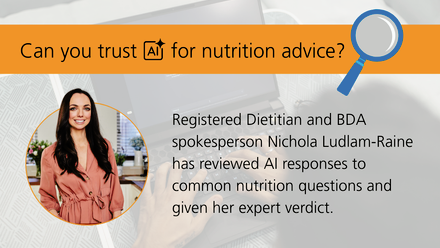This fact sheet contains practical up-to-date information about how to keep your heart healthy by making the right food and drink choices.
Healthy lifestyle habits are important for a healthy heart such as eating a healthy diet, physical activity, stopping smoking, drinking less alcohol and maintaining a healthy weight. Looking after your heart involves preventing your risk of developing heart disease and helping protect your heart if you already have problems. A heart-healthy diet may help reduce cholesterol levels, lower blood pressure, reduce your risk of diabetes and help you maintain a healthy weight.
Enjoy a variety of fruit and vegetables
Fruit and vegetables provide vitamins, minerals, fibre and other plant nutrients such as antioxidants that help protect your heart. Fresh, frozen, tinned and dried varieties all count. Aim to include five or more portions each day.
A portion is:
- three heaped tablespoons of vegetables
- a dessert bowl of salad
- two small fruits such as plums or satsumas or one larger fruit like an apple, an orange, peach or medium banana
- a handful of grapes, cherries or berries
- a 150ml glass of 100% unsweetened fruit juice
- a handful, about 30g, of dried fruit
Supplements don’t have the same benefits as eating fruit or vegetables. View our Food Fact Sheet on supplements to find out more.
Pulses (beans, peas and lentils) release their energy slowly which is thought to be good for heart health.
Soya, soya products and oats are also thought to have additional benefits due to their cholesterol lowering benefits. View our Soya Food Fact Sheet for more information.
Eat less salt
Eating too much salt can increase your risk of developing high blood pressure and this increases your chance of developing coronary heart disease. The daily recommended maximum for an adult is 6g – about a teaspoon. Try not to add salt when you are cooking or at the table. Much of the salt we eat is hidden in foods, such as soups, ready meals, biscuits and some breads and breakfast cereal - so check how much salt is in them by looking at the label.
Eat more fish
White fish is a great source of lean protein and oily fish is also a type of polyunsaturated fat called omega-3, that appears to have benefits for heart health. Aim to have two portions of fish a week, one of which should be an oily fish.
| Types of oily fish | Tips on how to eat oily fish | Alternative sources of omega-3 if you don’t eat fish |
|
Herrings – fresh or pickled |
Soused - with salad, grilled with new potatoes and vegetables |
Green leafy vegetables especially broccoli, spinach or cabbage Soya or canola (rapeseed) oils Walnuts, flaxseeds (linseeds) and their oils Foods fortified with omega-3 |
|
Mackerel – fresh, canned or smoked |
Flaked into rice salads or grilled with new potatoes and vegetables |
|
|
Sardines – fresh or canned in oil or water |
Grilled, BBQ, or canned sardines on toast |
|
|
Pilchards – canned in tomato sauce |
With pasta and green salad or on toast |
|
|
Trout – fresh or smoked |
Poached, grilled or baked |
|
|
Kippers – fresh or vacuum packed |
Poached for breakfast or supper |
|
|
Tuna (only fresh or frozen varieties are rich in omega-3) |
Grilled, with salads and in fish cakes |
|
|
Salmon – fresh, frozen or canned |
Fishcakes and fish pie mix |
Understanding fats
There are several types of fats in the diet and these have different effects on the heart.
Trans fats found in processed foods are associated with increased risk of heart disease. Eating less processed and takeaway foods is a good way to eat less trans fats. Cook from scratch using fresh ingredients.
Saturated fat is found mainly in animal products. Having a lot of saturated fat is linked with raised levels of harmful (LDL) cholesterol. Cut down on processed foods, eat more fruit, vegetables and starchy foods to reduce your saturated fat intake. Replacing saturated fat with moderate amounts of monounsaturated fat and polyunsaturated fat can also reduce harmful cholesterol. The table shows which foods contain each type of fat.
| Sources of fats | |||
| Saturated fats | Polyunsaturated fats | Monounsaturated fats | Trans fats |
|
Butter, ghee, lard, suet, dripping, cheese, cream, full-fat milk and fat on meat and poultry. Processed foods such as burgers, sausages, pastry, pies, cakes, biscuits and rich puddings. |
Sunflower, corn, soya and rapeseed oils. Spreads made from these oils. Nuts and seeds. |
Olive and rapeseed (canola) oils. Avocados. Some nuts including walnuts, almonds and pecans. |
Processed foods (see saturated fats). Fast food. Takeaway foods. |
Plant sterols and stanols
Some foods including fat spreads, milks and yoghurts, are fortified with plant sterols and stanols (natural plant substances which reduce the absorption of cholesterol in the gut).
Although the effect varies between individuals, there is evidence to show that plant sterols and stanols can help to reduce LDL cholesterol by levels up to 10-15 per cent when 2g per day is regularly consumed as part of a healthy balanced diet.
While taking plant stanols and sterols has been shown to reduce cholesterol levels, there is insufficient long-term evidence to show that they also reduce your risk of having a heart attack or stroke. So, in the UK, key guidelines don't recommend them for the prevention of cardiovascular disease and eating a healthy, balanced diet remains the advice.
Choose more high fibre foods
Eating more high fibre foods such as whole grains, pulses, fruits and vegetables help lower heart disease risk. They also help to fill you up which can be helpful if you are trying to lose weight. Change white breads for wholemeal or granary breads, use brown rice and wholegrain breakfast cereals.
Some of these foods are high in soluble fibre, which helps to lower LDL cholesterol. Good sources include oats, oat bran, and pulses such as baked beans, kidney beans, soya beans, peas, lentils and chickpeas.
Eat/drink less sugar
Eat less sugary foods such as cakes, biscuits, sweets, chocolates, ice cream and sugary soft drinks to achieve a healthier weight and reduce the risk of developing heart disease.
Check the sugar content on the labels and aim for no more than 30g sugar a day.
Aim for a healthy weight
If you can achieve a healthier weight you can improve your blood cholesterol levels. Start by increasing your physical activity and watching your portion sizes.
Mediterranean diet
Research shows that eating a Mediterranean style diet can reduce our risk of heart disease.
This diet is typically rich in fruit and vegetables, oily fish and wholegrains with modest amounts of meat and dairy and the main fat source being monounsaturated fats such as olive oil.
Top tips for a healthy heart
- Aim for at least five portions of fruit and vegetables every day.
- Eat two portions of fish a week, one of which should be an oily fish.
- Eat more peas, beans, lentils and vegetables.
- Limit processed foods, pastries, fried and fast food - choose healthy sandwiches or rolls, a baked potato or home-cooked food.
- Cut down on fatty meat products (sausages, pies, pasties, sausage rolls and streaky bacon) – swap for unprocessed meat or fish.
- Choose plant based spreads such as olive, rapeseed or sunflower oil.
- Choose more high fibre foods - high fibre bread, breakfast cereals, oats, brown rice and pasta, plus beans, peas and lentils.
- Choose healthier snacks such as fruit, fruit loaf, crumpets, dried fruit, unsalted nuts, seeds, low fat yoghurt, high fibre cereals or oatcakes.
- Keep salt intake low by eating less processed and takeaway foods, salty snacks such as crisps and nuts; canned and packet sauces, gravy products and condiments like ketchup.
- Stick to the guidelines for alcohol limits (limit intake to no more than 14 units per week for men and women spread over three or more days) and aim for two alcohol free days a week.
- Be physically active for at least 30 minutes every day.
- Do not smoke and avoid smoky environments.
Summary
If you decide to make changes, begin slowly with one or two suggestions. Remember, it is best to focus on improving your eating and exercise patterns as the main goal rather than aiming for weight loss. By eating well and being active you may or may not lose weight – but you will improve your heart health even if your weight stays the same.
Source(s)
Bacon, Linda, Stern, Judith S., Van Loan, Marta D., & Keim, Nancy L. (2005). Size Acceptance and Intuitive Eating Improve Health for Obese, Female Chronic Dieters. Journal of the American Dietetic Association, 105(6), 929-936. doi: http://dx.doi.org/10.1016/j.jada.2005.03.011
Bresson, Jean-Louis , Flynn, Albert , Heinonen, Marina, Karin, Hulshof, Hannu, Korhonen, Lagiou, Pagona , . . . Verhagen, Hans. (2008). EFSA Scientific Opinion of the Panel on Dietetic Products, Nutrition and Allergies: Plant Sterols and Blood Cholesterol - Scientific substantiation of a health claim related to plant sterols and lower/reduced blood cholesterol and reduced risk of (coronary) heart disease pursuant to Article 14 of Regulation (EC) No 1924/20061 The EFSA Journal 781, 1-12. Retrieved from https://efsa.onlinelibrary.wiley.com/doi/abs/10.2903/j.efsa.2008.781 website
British Nutrition Foundation. (1999). Obesity. The report of the British Nutrition Foundation Task Force. Oxford: Blackwell Science.
Carroll, Sean, Borkoles, Erika, & Polman, Remco. (2007). Short-term effects of a non-dieting lifestyle intervention program on weight management, fitness, metabolic risk, and psychological well-being in obese premenopausal females with the metabolic syndrome. Applied Physiology, Nutrition, and Metabolism, 32(1), 125-142. doi: 10.1139/h06-093
Hooper, Lee, Thompson, Rachel L., Harrison, Roger A., Summerbell, Carolyn D., Ness, Andy R., Moore, Helen J., . . . Smith, George Davey. (2006). Risks and benefits of omega 3 fats for mortality, cardiovascular disease, and cancer: systematic review. [10.1136/bmj.38755.366331.2F]. BMJ, 332(7544), 752-760.
Kris-Etherton, Penny, Eckel, Robert H., Howard, Barbara V., St. Jeor, Sachiko, & Bazzarre, Terry L. (2001). Lyon Diet Heart Study: Benefits of a Mediterranean-Style, National Cholesterol Education Program/American Heart Association Step I Dietary Pattern on Cardiovascular Disease. Circulation, 103(13), 1823-1825. doi: 10.1161/01.cir.103.13.1823
Mann, Traci, Tomiyama, A. Janet, Westling, Erika, Lew, Ann-Marie, Samuels, Barbra, & Chatman, Jason. (2007). Medicare's search for effective obesity treatments: Diets are not the answer. American Psychologist, 62(3), 220-233. doi: 10.1037/0003-066x.62.3.220
Mead, A., Atkinson, G., Albin, D., Alphey, D., Baic, S., Boyd, O., . . . Thoracic Dietitians Interest, Group. (2006). Dietetic guidelines on food and nutrition in the secondary prevention of cardiovascular disease – evidence from systematic reviews of randomized controlled trials (second update, January 2006). Journal of Human Nutrition and Dietetics, 19(6), 401-419. doi: 10.1111/j.1365-277X.2006.00726.x
Mellen, P. B., Walsh, T. F., & Herrington, D. M. (2008). Whole grain intake and cardiovascular disease: a meta-analysis. [Research Support, N.I.H., Extramural]. Nutrition, metabolism, and cardiovascular diseases : NMCD, 18(4), 283-290. doi: 10.1016/j.numecd.2006.12.008
Mozaffarian, Dariush, Micha, Renata, & Wallace, Sarah. (2010). Effects on Coronary Heart Disease of Increasing Polyunsaturated Fat in Place of Saturated Fat: A Systematic Review and Meta-Analysis of Randomized Controlled Trials. PLoS Med, 7(3), e1000252. doi: 10.1371/journal.pmed.1000252
Mulvihill, Caroline, & Quigley, Robert. (2003). The management of obesity and overweight : an analysis of reviews of diet, physical activity and behavioural approaches ; evidence briefing summary
National Cholesterol Education Program (NCEP) Expert Panel on Detection, Evaluation, and Treatment of High Blood Cholesterol in Adults (Adult Treatment Panel III). (2002). Third Report of the National Cholesterol Education Program (NCEP) Expert Panel on Detection, Evaluation, and Treatment of High Blood Cholesterol in Adults (Adult Treatment Panel III) final report. [Guideline
Practice Guideline]. Circulation, 106(25), 3143-3421.
National Guideline, Clearinghouse. Lipid management in adults Retrieved 8/29/2014, from http://www.guideline.gov/content.aspx?id=47783
NICE guidelines [CG181] (2014). Lipid modification: cardiovascular risk assessment and the modification of blood lipids for the primary and secondary prevention of cardiovascular disease, from http://www.nice.org.uk/Guidance/CG181
Williams, C, & Marmot, M.G. (1997). Changing rationales, consistent advice: dietary recommendations on vegetables and fruit. In L Rogers & I Sharp (Eds.), Preventing coronary heart disease. The role of antioxidants, vegetables and fruit. (pp. 49-46). London: H.M.S.O.







